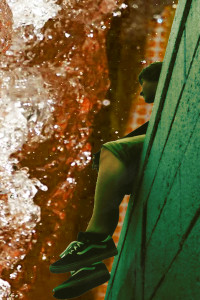Post-Internet art
October 5, 2015
In recent years members of the art community have held much discussion about a budding new movement called Post-Internet Art. Chances are almost everyone has already heard the term floating around in conversations between some of their more art-centered friends.
Many art critics believe that, with the internet, they have become more than just artists. “Artists after the Internet thus take on a role more closely aligned to that of the interpreter, transcriber, narrator, curator, architect.” said contemporary and post-internet artist, Artie Vierkant, in his famous essay “The Image Object Post-Internet.”
Defining Post-Internet
Although the movement has not yet been thoroughly defined, as no movement was at its first emergence, leading institutions have lent their hands in defining this emerging campaign.
“Just as twentieth-century modernism was in large part defined by the relationship between craft and the emergent technologies of manufacturing, mass media, and lens-based imagery, the most pressing condition underlying contemporary culture today—from artistic practice and social theory to our quotidian language—may well be the omnipresence of the internet…” said the Ullens Center for Contemporary Art in the opening statements to their “Art Post-Internet” exhibit in March 2014.
The Rise of a Movement
The Ullens Center of Beijing has been one of the first large institutions to recognize post-internet art. Although they may have been to thoroughly accept the movement, front running artists had spoken of the movement almost 13 years before the Ullens’ exhibits.
There are several references to the idea of “post-net culture” in the writings of Russian author and new media theorist, Lev Manovich, as early as 2001. “post-net culture” usually refers to the new aesthetics and artistic customs that have developed with the use of the internet. Post-Internet art developed from late forms of contemporary and abstract art. The real difference between contemporary and post-internet art is that post-internet is made in the context of digital technology.
Later, 38-year-old German artist, Marisa Olson coined the term “Post-Internet Art.” The idea of a post-internet art movement was developed further by writer, Gene McHugh, in his critical piece “Post Internet” circa 2010 through thorough explanations of the differences between current art and past movements.
The aforementioned movement concerns “art responding to [a condition] described as ‘Post Internet’–when the Internet is less a novelty and more a banality. Perhaps…closer to what Guthrie Lonergan described as ‘Internet Aware’–or when the photo of the art object is more widely dispersed [&] viewed than the object itself,” under McHugh’s definition.
Some of the most popular pieces within the Post-Internet Art movement include the “Nine Eyes of Google Street View,” by Jon Rafman, Oliver Larc’s “Icon,” and “Self Portrait,” by Petra Cortright.
http://ucca.org.cn/en/exhibition/art-post-internet/
http://www.artspace.com/magazine/interviews_features/trend_report/post_internet_art-52138
https://ehttp://jstchillin.org/artie/pdf/The_Image_Object_Post-Internet_us.pdfn.wikipedia.org/wiki/Postinternet


